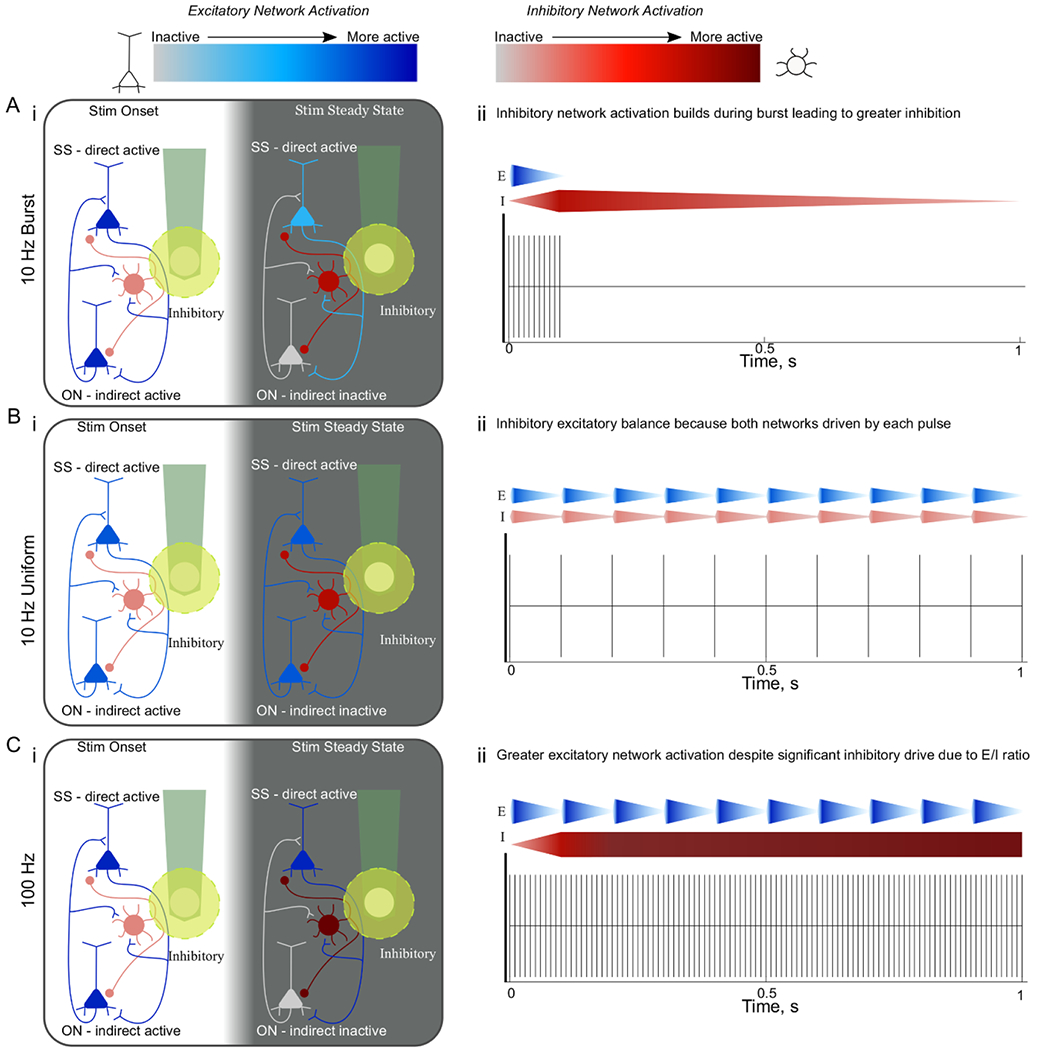Figure 9.

TP of stimulation differentially drives excitatory and inhibitory network activation. TP of stimulation differentially drives excitatory (EN) and inhibitory network (IN) activation. Greater inhibitory/excitatory network activation is depicted by darker red, or blue colors, respectively. Within the boxes on the left, the white background corresponds to the onset period (0–2 s) and the grey background corresponds to the steady state period (28–30 s). The yellow circle around the electrode site represents the area of direct activation, where neurons whose fibers pass through this area are activated antidromically. On the right, the gradient wedges represent the respective network activation. (A) During 10 Hz-Burst stimulation Inhibitory neuron activation builds during the burst leading to greater network inhibition. During stimulation onset, excitatory and inhibitory neurons are thought to both be active (i, ii), but because inhibitory neurons can fire at higher rates, the IN activation builds during the burst (ii, gradient wedge) and eventually outweighs the excitatory activation, leaving only directly activated neurons active during the steady state period (i, SS neurons) inactivating indirectly activated neurons (i, ON). (B). During 10 Hz-Uniform stimulation, both excitatory and inhibitory neurons can fire at 10 Hz, but because there are more excitatory neurons there is stable activation during onset and steady state periods (i) and network activation that displays the balance of excitation and inhibition in the cortex. (C). 100 Hz stimulation leads to greater excitation (i, ii; darker neurons/wedges) despite significant inhibitory drive. Despite the hypothesis that inhibitory entrainment would be greater leading to inactivation of indirectly activated neurons (i, ON), this increased excitation is thought to be a result the excitatory drive increasing at every pulse as soon as the excitatory neurons’ refractory period is over (ii). Note: the inhibitory activity is hypothesized based on data, but these neurons were not labeled in the animal model used.
